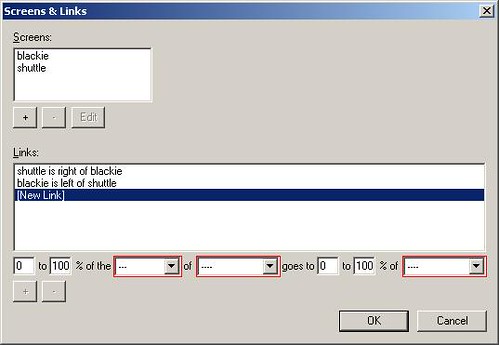The debian request-tracker3.6 package puts things in different places than request tracker expects.
If you haven’t yet run ‘zless /usr/share/doc/request-tracker3.6/NOTES.Debian.gz’ do so now!
Auth is the filename, and you may need to create those folders.
# RT_SiteConfig.pm
#
# These are the bits you absolutely *must* edit.
#
# To find out how, please read
# /usr/share/doc/request-tracker3.6/NOTES.Debian
# THE BASICS:
Set($rtname, ‘host.domain.com’);
Set($Organization, ‘domain.com’);
Set($CorrespondAddress , ‘rt@domain.com’);
Set($CommentAddress , ‘rt-comment@domain.com’);
Set($Timezone , ‘US/Pacific’); # obviously choose what suits you
# THE DATABASE:
Set($DatabaseType, ‘mysql’); # e.g. Pg or mysql
# These are the settings we used above when creating the RT database,
# you MUST set these to what you chose in the section above.
Set($DatabaseUser , ‘rtuser’);
Set($DatabasePassword , ‘rtpassword’);
Set($DatabaseName , ‘rtdb’);
# THE WEBSERVER:
Set($WebPath , “”);
Set($WebBaseURL , “http://host.domain.com”);
# Authentication
### What auth methods do you like and in what order?
Set($AuthMethods, [‘LDAP’, ‘Internal’]);
#Set($AuthMethods, [‘LDAP’]);
### LDAP Settings
#
# There are two different branches of this: LdapAuth* and LdapInfo*;
# additionally, most of the old Ldap* variables are honored, too.
#
# This means if you only have one LDAP server/config you can just set
# “LdapServer”, “LdapUser”, etc. and they will be used for both
# authentication and information
### Enable/Disable LDAP services
Set($LdapExternalAuth, 1);
Set($LdapExternalInfo, 1);
### Common Settings: affecting both auth and info services
# Should we create accounts for users who aren’t in LDAP?
Set($LdapAutoCreateNonLdapUsers, 1);
# Map RT attributes to LDAP attributes
#
### THE MAPPING BELOW WILL NOT WORK FOR YOU UNLESS YOU CHANGE
### IT TO MATCH YOUR LDAP SCHEMA! See http://wiki.bestpractical.com/view/LdapAttrMap
### to learn how to set this variable properly for either LDAP or Windows
### Active Directory.
Set($LdapAttrMap, {
‘Name’ => ‘sAMAccountName’,
‘EmailAddress’ => ‘mail’,
‘Organization’ => ‘physicalDeliveryOfficeName’,
‘RealName’ => ‘cn’,
‘ExternalContactInfoId’ => ‘dn’,
‘ExternalAuthId’ => ‘sAMAccountName’,
‘Gecos’ => ‘sAMAccountName’,
‘HomePhone’ => ‘homePhone’,
‘WorkPhone’ => ‘telephoneNumber’,
‘MobilePhone’ => ‘mobile’,
‘PagerPhone’ => ‘pager’,
‘Address1’ => ‘streetAddress’,
‘Address2’ => ‘postOfficeBox’,
‘City’ => ‘l’,
‘State’ => ‘st’,
‘Zip’ => ‘postalCode’,
‘Country’ => ‘co’,
‘FreeformContactInfo’ => ‘info’}
);
# A list of RT attrs which can uniquely identify a user,
# ordered from most to least preferred.
Set($LdapRTAttrMatchList, [‘ExternalContactInfoId’, ‘Name’,
‘EmailAddress’, ‘RealName’,
‘WorkPhone’, ‘Address2’]
);
# A list of LDAP attrs to examine when canonicalizing email addresses,
# ordered from most to least preferred
Set($LdapEmailAttrMatchList, [‘mail’, ‘mailRoutingAddress’,
‘mailAlternateAddress’]
);
# A list of prefixes to apply to email address matches.
# Windows 2003 AD uses prefixes or smtp: or SMTP:.
# If not required just leave ”
Set($LdapEmailAttrMatchPrefix, [”, ‘smtp:’, ‘SMTP:’] );
# The basics; if set, these override $RT::LdapAuth* and $RT::LdapInfo*
Set($LdapServer, ‘ldap.domain.com’);
Set($LdapBase, ‘dc=domain,dc=com’);
Set($LdapFilter, ‘(objectclass=*)’);
#Set($LdapFilter, ‘(objectclass=posixAccount)’);
# Windows 2003 Active Directory does not allow anonymous LDAP binding
# thus you must pass Net::LDAP a username and password that has
# access to read the directory.
#
# You may also need to specify the full distinguished name instead of
# just a username for LdapUser below.
# e.g. cn=Username,cn=Users,dc=yourdomain,dc=com
#
Set($LdapUser, ‘binddn’);
Set($LdapPass, ‘bindpassword’);
# This filter is used by RT::User::UpdateFromLdap to test whether an
# LDAP user’s RT account should be disabled. Any user whose LDAP record
# passes this filter (returns true) will be disabled at login
Set($LdapDisableFilter, ‘(employmentStatus=Terminated)’);
# If you set these, only members of this group can auth via LDAP
#Set($LdapGroup, ‘cn=RT,ou=Group,dc=example,dc=com’);
#Set($LdapGroupAttr, ‘uniqueMember’);
# These turn on SSL for LDAP
#Set($LdapTLS, 0);
#Set($LdapSSLVersion, 3);
### IF YOU USE THE SAME LDAP SERVER FOR AUTH AND INFO STOP HERE ###
### Authentication settings
#
# These are used only if their $RT::Ldap* analogs are not set;
# if you want one of these variables to be honored, you must comment
# out the corresponding $RT::Ldap* variable above
#Set($LdapAuthServer, ‘ldap.example.com’);
#Set($LdapAuthBase, ‘ou=People,dc=example,dc=com’);
#Set($LdapAuthFilter, “(objectclass=posixAccount)”);
#Set($LdapAuthUser, ”);
#Set($LdapAuthPass, ”);
# This filter is used by RT::User::UpdateFromLdap to test whether an
# LDAP user’s RT account should be disabled. Any user whose LDAP record
# passes this filter (returns true) will be disabled at login
# Set($LdapAuthDisableFilter, ‘(employmentStatus=Terminated)’);
# If you set these, only members of this group can auth via LDAP
#Set($LdapAuthGroup, ‘cn=RT,ou=Group,dc=example,dc=com’);
#Set($LdapAuthGroupAttr, ‘uniqueMember’);
# These turn on SSL for LDAP
#Set($LdapAuthTLS, 0);
#Set($LdapAuthSSLVersion, 3);
### Information settings
#
# These are used only if their $RT::Ldap* analogs are not set;
# if you want one of these variables to be honored, you must comment
# out the corresponding $RT::Ldap* variable above
#Set($LdapInfoServer, ‘ldap.example.com’);
#Set($LdapInfoBase, ‘ou=People,dc=example,dc=com’);
#Set($LdapInfoFilter, “(objectclass=posixAccount)”);
#Set($LdapInfoUser, ”);
#Set($LdapInfoPass, ”);
# This filter is used by RT::User::UpdateFromLdap to test whether an
# LDAP user’s RT account should be disabled. Any user whose LDAP record
# passes this filter (returns true) will be disabled at login
# Set($LdapInfoDisableFilter, ‘(employmentStatus=Terminated)’);
# These turn on SSL for LDAP
#Set($LdapInfoTLS, 0);
#Set($LdapInfoSSLVersion, 3);
1;

